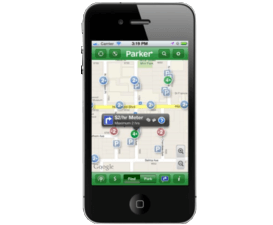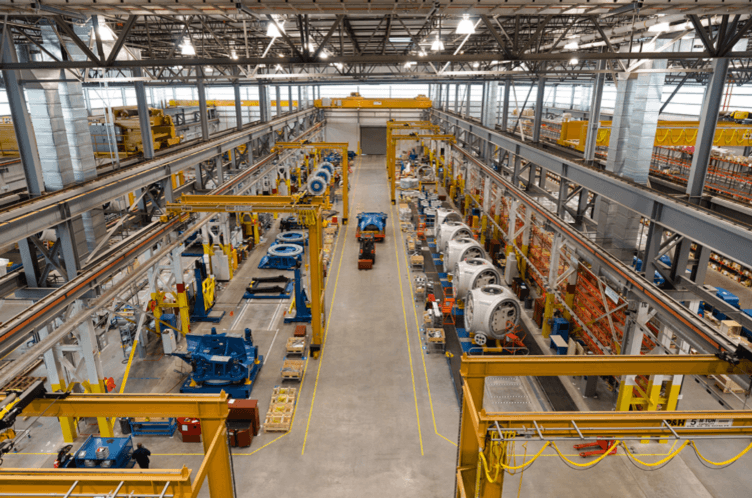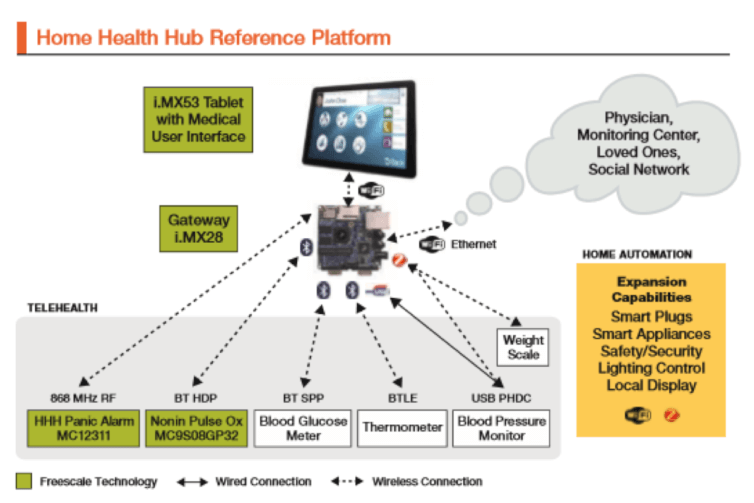Understanding the true potential of the Internet of Things
Consumers today are increasingly familiar with concepts like smart devices and smart homes. According to a PricewaterhouseCoopers Limited PwC “Smart home, seamless life” survey in January 2017, 81% of US Internet users are aware of smart devices, and 26% currently own one.
However, although some also appreciate the added potential offered by devices that can work with one another, the bigger picture behind smart devices – the Internet of Things, or IoT – is not quite so well known. Notwithstanding this, the IoT is growing fast; Gartner predicts a growth to 26 billion installed units by 2020, representing an almost 30-fold increase from 0.9 billion in 2009. To fully understand this growth and appreciate what the IoT is all about, it’s essential to realise that it has a much wider coverage and meaning than just smart home implementations.
This is addressed in a report from Microsoft, called “The IoT-enabled enterprise”. The report starts by dividing the IoT into two types; consumer and industrial. In Microsoft’s definition, consumer IoT looks at consumer devices, such as household appliances, that can be connected to the Internet to help people live better. Industrial IoT focuses on how businesses can use intelligent devices and the data they collect to streamline and improve operations.
In this article, we look at this broader definition of the IoT and explain its nature by summarising its critical components, and then giving examples that highlight the various ways in which technology, when integrated into the IoT, is changing our society. A key point to realise before going further, though, is that ‘Industrial’ in this context does not refer only to factories, but also to city infrastructures, transport systems, emergency services, and even our clothes or bodies – in other words, any application that fulfils the Industrial IoT objectives as defined above.
Overall, we will see how the IoT brings new insight into the environments where it’s applied. Problems can be solved and processes improved in radically new and better ways, informed by a richness of data and power of correlation that has never been available before. The article also shows some particular trends in IoT, including:
- Large-scale, ‘industrial’-type IoT applications are impacting our lives with varying degrees of visibility as they appear in wearable, medical, automotive, industrial and many other environments.
- The benefits of the IoT are increasing as designers work to drive down the level of human involvement needed, both from operators (such as doctors) and users (such as patients). This not only improves productivity, reduces errors and saves labour, but also delivers better more cost-effective results through more extensive, automatically-gathered data.
- The wider use of real-world data from sensors used to inform decision-making processes that were previously paper-based only
IoT system – key elements
The IoT is not a single system, but instead comprises many disparate components that must be integrated to work with one another. To make sense of this, we can start by analysing the IoT into four key areas, as shown below.
Sensors, actuators and edge devices: Sensors are available with costs and power demand low enough for viable deployment in large numbers around a target application – greatly improving the volume and quality of data available. There are many edge devices now available that include computing, communications, security and power management functions as well as the sensing element, often within a single package. Intelligent actuators with status feedback signals are also available for operation as edge devices.
Fig.1: HumidIcon™ HIH 6000 Series combined digital relative humidity/temperature sensor, with I2C bus output
Local networks: Many local network protocols are available; this choice allows designers to optimally balance data capacity, transmission distances and power demand parameters for the particular needs of their application. Depending on the network, edge devices can be a few metres or a few kilometres from their management gateway.
Gateways: Gateways that can handle interfacing with sensors through suitable local networks, local processing, and protocol conversion for IPv4/IPv6, cellular wireless, or low-power, wide-area wireless network communication with Cloud resources.
Cloud: Cloud resources and services that give enterprises access to the type of data processing, analysis and storage resources they need at affordable prices and with good scalability. These are often accessed using Software as a Service (SaaS) or other service agreements.
For more information on these areas, refer to the article “ What are the next key issues for implementing IoT? ”
IoT use cases; where they’re found, their innovation and their benefits to users.
Perhaps the most effective way to demonstrate how the IoT is changing our social, domestic and working lives is to provide some examples that together reveal its penetration, diversity and potential. Accordingly, below we sample some cases from automotive, wearable, industrial and medical applications.
Automotive IoT infrastructures that save consumers time and money
In cities around the world, managing traffic flow is a huge and worsening problem. One major cause of congestion is drivers’ search for parking places; according to an Economist article , the record is held by the German city of Freiburg, where one study showed that 74% of cars were on the prowl.
However, the IoT is alleviating this with solutions like the Parker app, which is currently being used successfully in US cities such as Los Angeles, Washington DC and New York, and Birmingham and Manchester in the UK. The app, which automatically alerts drivers when parking spaces become available, is based on electronic sensors buried in hundreds of parking bays. Motorists can access the scheme by downloading a free mobile app to their iPhone or Android device. It shows availability in real time, and acts as a satnav, directing drivers to the nearest suitable bay. Being voice-activated, it can be used while driving.

Fig.2: Smartphone screen for Parker app
The app is also helping longer-term planning by giving parking scheme managers detailed information about which bays are being used at what times, and for how long.
While the Parker app makes life easier for consumers, other IoT solutions are saving them money. ‘Black box’ or telematics insurance allows drivers to secure lower premiums by having a black box fitted into their car, which monitors their driving patterns using GPS. Good behaviour is rewarded with lower premiums. This is an interesting example of the IoT’s impact because insurance companies, which traditionally relied on ‘paper’ data, are now using measured real-world data – a new, engineering dimension.
Wearable applications for safety, security and productivity
Firefighters experience extreme physiological stress during their duties. According to the U.S. Fire Administration , stress and overexertion account for 50% or more of firefighter line of duty deaths. Factors that affect firefighter physiological responses include exertion of work performed, elevated thermal environment, wearing heavily insulated protective clothing and carrying heavy equipment, as well as individual health status, fitness level, medication, and hydration level.
US manufacturer Globe has developed a Wearable Advanced Sensor Platform (WASP™) that is based on intelligent protective clothing with built-in sensors that allow training academy instructors or incident commanders to monitor physiological factors such as heart rate, respiration rate, activity levels and posture in real time. It also provides location and tracking of personnel.
This real-time situation awareness aids commanders’ decision-making, while stored information can be used for later incident analysis. The location capability can also be used for pre-incident plan mapping of high-risk facilities.
Within manufacturing plants, controlling access to and within the site and protecting information and automation systems is a business essential. This becomes increasingly challenging as enterprises employ more systems for information processing, building automation and process control and interconnect them to one another. Personnel from facilities, security, operations, maintenance, engineering, inventory, purchasing, IT, training and corporate functions need access authorisation for varied reasons.

Fig.3: In business environments controlling access to and within the site and protecting information and automation systems is a business essential.
One answer, from RF Ideas , is to extend the concept of badges used for building access into smart devices that control access to individual machines and processes. With the cloud and big data accelerating the convergence of IT and operations technology (OT), more refined security and risk management opportunities are available.
These new badge-based readers coupled with partner applications are standardizing and streamlining manufacturing access control processes. The same employee badge used to enter a building can now also be used to authenticate access to equipment, factory lines, gated robotic rooms, documents and software, and to regulate activity on control systems, networks, and equipment. Virtually any movement within the facility and any activity throughout the day could potentially be tracked and managed with the right badge reader, apps and a badge.
While creating faster, easier and more robust security procedures, other cost benefits can be realised as well. After a large paint manufacturer installed a badge reader on its mixers to ensure that only authorized, trained employees could unlock and operate the equipment, the number of bad batches fell from 12 per week to less than one per week, saving the company nearly $2.5 million annually.
The IoT’s multiple impacts on factory automation and process control
An article by Cisco describes how 70% of manufacturing executives are focusing on plant-floor data initiatives to drive operational and business excellence, faster time to market, and immediate access to data from machines on the factory floor. Convergence between enterprise and manufacturing networks is ushering in smart assembly; this means that downtime is reduced through providing remote access to systems and partners, while the enterprise enjoys precision, resiliency and reliability from the plant floor.
Improving networks and connectivity are also facilitating visual factories, where manufacturers have a dashboard view of multi-plant environments. Better visibility into equipment performance, resource needs and security threats enhances efficiency, safety and return on assets. This has further value for industrial facilities that need better integration of production systems across geographically dispersed sites; IoT connectivity gives enterprise applications access to device-level production data in real time, allowing faster information flows, faster decisions, and greater market responsiveness.
Maintenance costs and downtime can be significantly reduced by embedded sensors and actuators that make machines ‘self-aware’ and able to communicate with other equipment without human intervention. These networks of intelligent machines adjust automatically to changing operating conditions as well as providing pre-emptive maintenance alerts that forestall breakdowns.
IoT brings benefits and new possibilities to healthcare through reducing human intervention
Kevin Ashton, who first coined the term ‘Internet of Things’ during a 1999 business presentation, believes that a key IoT benefit is its empowerment of devices to gather information on their own, without the limited bandwidth and accuracy attendant on human interaction. This facet is particularly important in the medical sector, where human error can have particularly serious consequences. Additionally, improvements in sensor and networking technology are giving doctors access to data that was not previously available.
For example, small powerful wireless solutions connected through the IoT are allowing monitoring of patients in remote locations without the need for doctor or patient to travel. Health data can be captured from a variety of sensors, analysed using complex algorithms, and shared through wireless connectivity with medical professionals who can make appropriate healthcare recommendations.
As a result, patients with chronic diseases may be less likely to develop complications, and acute complications may be diagnosed earlier than they would be otherwise. For example, patients suffering from cardiovascular diseases who are being treated with digitalis could be monitored around the clock to prevent drug intoxication. Arrhythmias that are randomly seen on an EKG could be easily detected, and EKG data indicating heart hypoxemia could lead to faster detection of cardiac issues. The data collected may also enable a more preventive approach to healthcare by providing information for people to make healthier choices.
Freescale’s Home Health Hub reference platform is one example of enabling technology for remote monitoring scenarios such as these.

Fig.4: Freescale’s Home Health Hub reference platform
Conclusion
The technologies underlying the IoT – sensors, actuators, networking, the Internet and cloud computing services - are not new, but IoT benefits are becoming increasingly apparent as developers succeed in integrating these technologies into diverse, end-to-end implementations. Progress is helped by improvements in these technologies, such as smaller, lower power and lower cost sensors. The emergence of standards such as Thread will also ease IoT integration. Thread, with backing from the thermostat manufacturer Nest (from the same stable as Google) is an ambitious, wireless-centric standard that covers networking, power conservation, security, and product compatibility.
As developers exploit the new opportunities offered by improved products and easier integration, industrial, commercial and public organisations, as well as individuals, will benefit in ways as exemplified by the examples in this article. Organisations will have access to previously unavailable data which they can convert into actionable information, used to reduce human intervention and error, improve productivity and cut downtime. Individuals benefit from an improved quality of life, whether it’s through improved physiological monitoring and healthcare, or simply a more stress-free driving and parking experience.
References
PriceWaterhouseCoopers Ltd’s “Smart home, seamless life” survey - http://www.energymatters.com.au/renewable-news/smart-home-devices-em5886
Gartner Says the Internet of Things Installed Base Will Grow to 26 Billion Units By 2020 http://www.gartner.com/newsroom/id/2636073
Microsoft report: “The IoT-enabled enterprise - Reinventing industries on a global stage” https://sf-asset-manager.s3.amazonaws.com/96928/3/1469.pdf
Farnell Element 14 article: What are the next key issues for implementing IoT?
“Aparkalypse Now”, The Economist, April 8th – 14th 2017
“Find out if black box insurance could be cheaper for you” – Money Super Market, 11 November 2015 https://www.moneysupermarket.com/car-insurance/black-box-insurance
WASP™ Wearable Advanced Sensor Platform: http://globeturnoutgear.com/innovation/wasp
Access Control Enters the Realm of Industrial Automation: http://backend.bluestarinc.com/fileadmin/bluestar-typo3/documents/PDF-CaseStudies/RFID/RFIDeas_AccessControl_Paper1_WP700.web.pdf
How Internet of Things Will Change Industry – Cisco Systems, June 2013: http://www.industrial-ip.org/en/industrial-ip/internet-of-things/how-the-internet-of-everything-will-transform-industries
“How the Internet of Things Is Revolutionizing Healthcare”, Freescale Semiconductor: https://cache.freescale.com/files/corporate/doc/white_paper/IOTREVHEALCARWP.pdf
Understanding the true potential of the Internet of Things. Date published: 19th May 2017 by Farnell element14